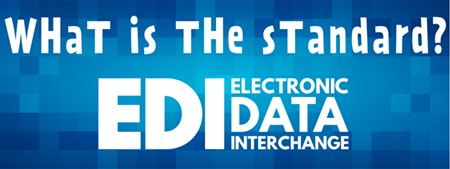EDI: A Standard That’s Not Really Standard

EDI is truly a standard for electronic document formatting but many companies on the receiving side don’t understand why EDI appears to be different for every trading partner. Shouldn’t an order (EDI 850) from every customer look the same? That’s ideal but it’s not realistic.
Every company uses different software to run their business. The EDI standards are flexible enough to allow each company to create an 850 that best matches their accounting or ERP software. Company A might be using SAP and Company B might be using Sage. All orders that Company A sends from SAP to their suppliers will have the same EDI structure. All orders that Company B sends from Sage to the same suppliers will have the same EDI structure too, but it won’t look the same as Company A's.
Company A and B get the most benefits from EDI by standardizing the 850 from their perspective, but the same benefits don’t extend to their suppliers.
As an EDI outsourcing service provider we’ve come across hundreds of adaptations of the EDI 850 and no two are alike. Then there’s the 810 (invoice), 856 (advanced ship notice), 940 (warehouse shipping order) and so on. They are all part of the EDI standards but it’s the implementation of those standards that can be overwhelming for suppliers. The burden is on the suppliers to accept all the different EDI documents exchanged with their customers. If the suppliers want the business they have no choice but to comply and adapt.
To learn more about the structure of EDI, download the whitepaper “What is EDI and How does it work?”
Every company uses different software to run their business. The EDI standards are flexible enough to allow each company to create an 850 that best matches their accounting or ERP software. Company A might be using SAP and Company B might be using Sage. All orders that Company A sends from SAP to their suppliers will have the same EDI structure. All orders that Company B sends from Sage to the same suppliers will have the same EDI structure too, but it won’t look the same as Company A's.
Company A and B get the most benefits from EDI by standardizing the 850 from their perspective, but the same benefits don’t extend to their suppliers.
As an EDI outsourcing service provider we’ve come across hundreds of adaptations of the EDI 850 and no two are alike. Then there’s the 810 (invoice), 856 (advanced ship notice), 940 (warehouse shipping order) and so on. They are all part of the EDI standards but it’s the implementation of those standards that can be overwhelming for suppliers. The burden is on the suppliers to accept all the different EDI documents exchanged with their customers. If the suppliers want the business they have no choice but to comply and adapt.
To learn more about the structure of EDI, download the whitepaper “What is EDI and How does it work?”
